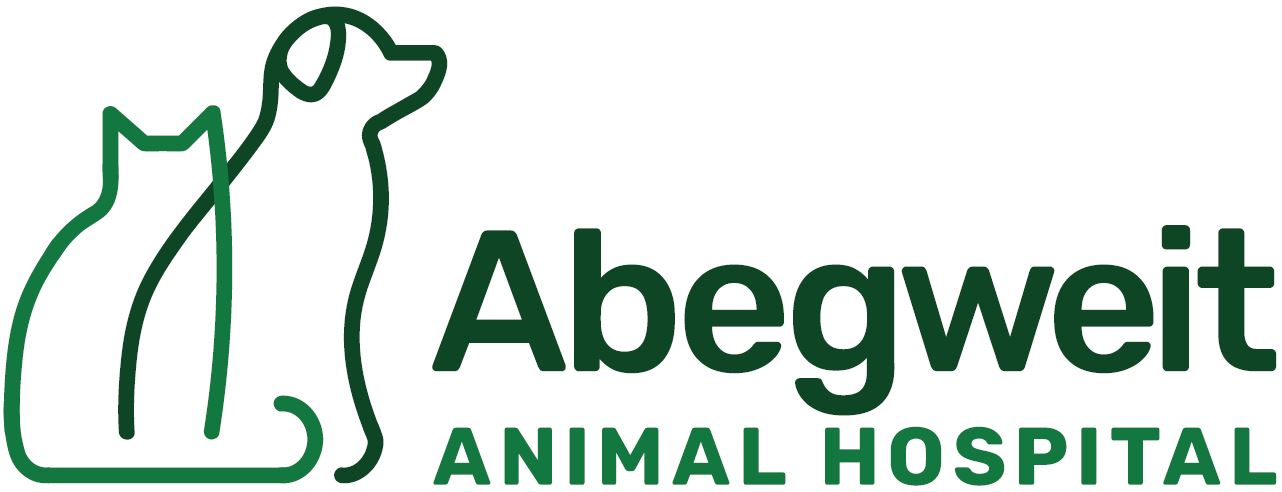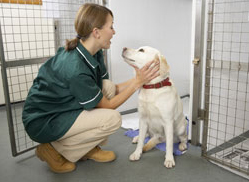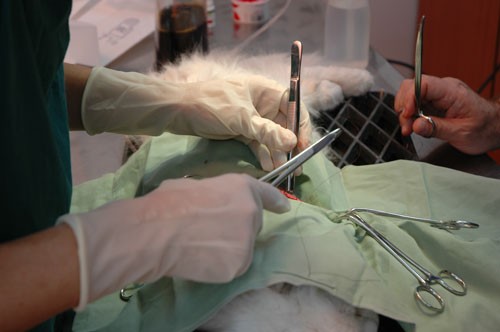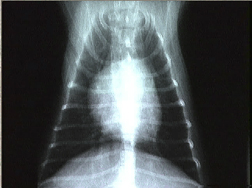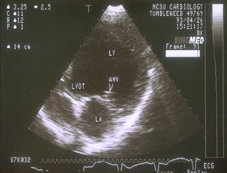Radiology (x-rays) is routinely used to provide valuable information about a pet’s bones, gastrointestinal tract (stomach, intestines, colon), respiratory tract (lungs), heart, and genitourinary system (bladder, prostate). It can be used alone or in conjunction with other diagnostic tools, such as ultrasonography, to provide a list of possible causes for a pet’s condition, identify the exact cause of a problem or rule out possible problems. Two machines are used at the clinic. One is the conventional x-ray machine used to take x-rays of various parts of the body, and the other is a dental x-ray machine used to take x-rays of the teeth and jaws only.
When a pet is being radiographed, an x-ray beam passes through its body and hits a piece of radiographic film. Images on the film appear as various shades of gray and reflect the anatomy of the animal. Bones, which absorb more x-rays, appear as light gray structures. Soft tissues, such as the lungs, absorb fewer x-rays and appear as dark gray structures. Interpretation of radiographs requires great skill on the part of the veterinarian. For complicated cases, we have a radiologist examine the radiographs and give an opinion on any abnormalities present.

